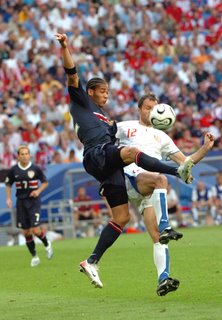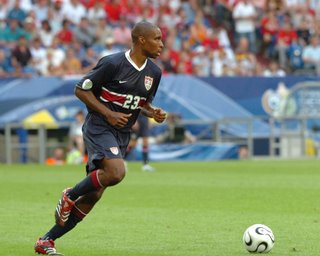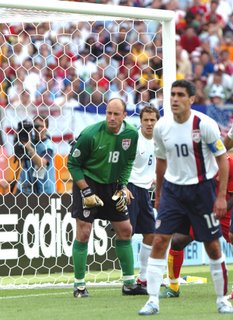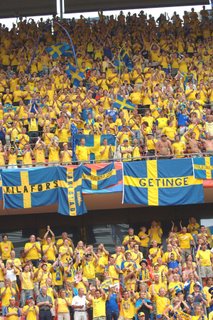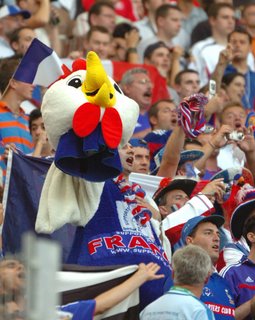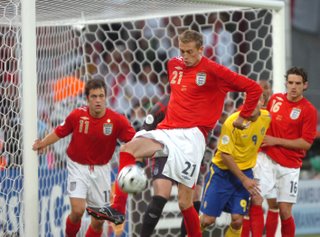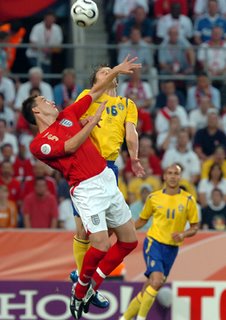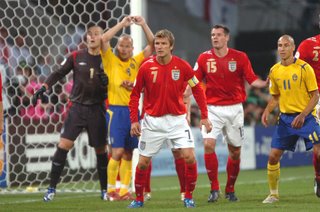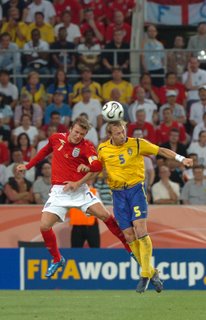Remember These Names for South Africa
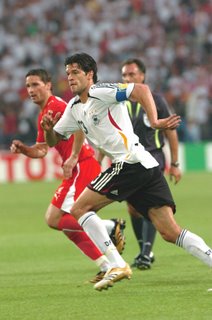



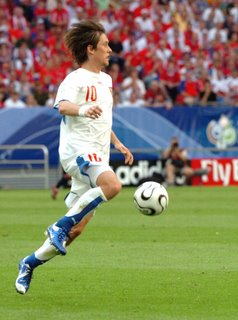

There was a wealth of young and maturing talent on display in Germany during this World Cup, in addition to the aforementioned rising American stars. Many of these players could become household names through their club play over the next four years leading into 2010 and the South Africa World Cup.
Going into his third World Cup in 2010 would be Michael Ballack (above, left), who recently transferred to Chelsea, one of the world's highest payroll clubs. A controlling presence in midfield and a talented server and header, Ballack should be one of the keys to Germany's next push to reach the final.
Also rising out of the ranks of young German players are forward Lukas Podalski and midfielder Bastian Schweinscheiger, 22 and 21-years old respectively this time around. At 32 years old in 2010, German forward Miroslav Klose (above, breaking in on goal), this World Cup's leading scorer, could also be a key cog in that team's lineup, as will be then 26-year old defenders Philipp Lahm (above, right) and the imposingly tall Per Mertesacker.
One of this tournament's controversial players was Portugal's Cristiano Ronaldo, who was an orchestrator of his Manchester United teammate, Wayne Rooney's sendoff in the match with England. Choosing to take on the wrath of English fans and return to Man U., Ronaldo should be steeled to the next level of international competition by South Africa, adding to his already formidable arsenal of talents.
Rooney himself will also be a rising star in advance of 2010, and could benefit from his 2006 disqualification against Portugal in much the same way David Beckham rebounded from a red card in 1998 against Argentina. Much of England's success will depend on this versatile goalscorer's maturation.
Another proven goal scorer at this World Cup was Czech midfielder Tomas Rosicky, who notched two goals against the U.S. At 26, but looking about 18, Rosicky is capable of scoring from the outside on brilliantly struck balls, as he did against the U.S., or by creating or converting on break-throughs into the area, also as demonstrated against the Americans, who were admittedly, pushed up trying to get back into a 2-0 match on this particular occasion.
Another of the rising talents is Spain's 22-year old forward, Fernando Torres. Trailing 1-0 to Tunisia, Torres put Spain on his shoulders, and in lightning fashion, was in integral part of putting together a 2-1, come-from-behind win. Torres is a speedy and talented ball handler, with a knack for finishing that makes him an obvious successor to Raul.
There are a number of other players also worthy of note but will stop at these for now and encourage fans to follow these, and the other names, through the coming four years.
As with all the content of this blog, written and photographic, Copyrighted 2006, All Rights Reserved, Perry McIntyre, Atlanta, GA - USA.


